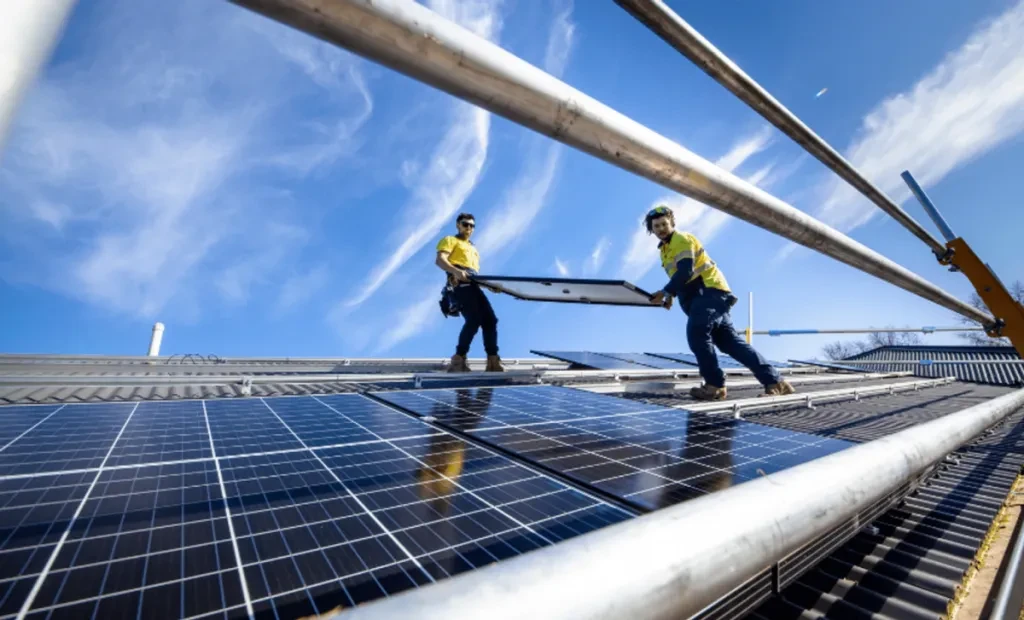Rooftop PV is the fourth-largest source of electricity generation in Australia, providing about 11% of the country’s power supply, but SunWiz says the market faces challenges.

More than one in three Australian households have already rolled out rooftop solar but new analysis by solar industry consultancy SunWiz shows the market faces a “profit squeeze” brought about by a decline in wholesale panel prices and a slowdown in rooftop PV installation rates.
Sunwiz founder Warwick Johnston said the slowdown is not yet reflected in the volumes of rooftop installations – with the year-to-date total up 7% on the corresponding time last year – but is clearly reflected in some other bits of the firm’s data.
The data shows a downturn in lead volumes, in sales, and in lead conversion rates. Lead volumes in April 2024 were 10% higher than the same month two years ago – the lowest level since December 2022. Proposals and sales have been trending downwards since June 2023 while the conversion rate has dropped to 1.5% below the April 2022 mark and hasn’t yet levelled out.
This has coincided with a decline in the wholesale price of panels in Australia from AUD 0.60 ($0.40) midway through 2022 to AUD 0.30 now.
“The net result of this is a profit squeeze,” Johnston said. “Prices can fall but if volumes lift, revenues can stay the same and for a period of time there in 2023 that was true on the wholesale front, but Q1 volumes have fallen. It’s meant that the wholesalers are dealing with less revenue.”

Despite the decline in panel prices, Johnston said retailers are also feeling the squeeze with the slowdown in installation rates coinciding with an increase in inverter prices and customers spending less money per rooftop installation.
“For a long time, we’ve seen typical customers paying AUD 9,000 for a rooftop solar system,” he said, noting that as panel prices decreased, consumers continued to invest similar amounts, opting for larger systems with the average system size increasing to almost 10.5 kW in the final month of 2023. “As prices were falling, system sizes were rising with customers spending basically the same, but now, you’re working hard for the same amount of money. Now we’re actually seeing people starting to spend less.”
SunWiz said the drop off in installation rates has coincided with an increase in overheads associated with rising labour costs.
An increase in residential battery energy storage system installs is providing some solace for retailers.
“Retailers delivering just PV are getting less revenue than they have since 2019,” Johnston said. “If they’re doing PV and batteries though, it’s a record year, but only just.”
A record 57,000 residential battery energy storage systems, with a combined capacity of 656 MWh, were installed in Australian homes in 2023, up 21% on the previous year.
The ratio of battery installations to solar installations was also up in 2023, climbing to 17% with one energy storage system installed for every six rooftop PV systems, up 15% on 2022.
In spite of the record rollout of residential batteries, Johnston said he expects the market to face challenges into the immediate future.
“This period isn’t about to end soon, because those drivers will persist,” he said. “These challenges are the new normal.”
This content is protected by copyright and may not be reused. If you want to cooperate with us and would like to reuse some of our content, please contact: editors@pv-magazine.com.
Source from pv magazine
Disclaimer: The information set forth above is provided by pv-magazine.com independently of Chovm.com. Chovm.com makes no representation and warranties as to the quality and reliability of the seller and products.





 বাংলা
বাংলা Nederlands
Nederlands English
English Français
Français Deutsch
Deutsch हिन्दी
हिन्दी Bahasa Indonesia
Bahasa Indonesia Italiano
Italiano 日本語
日本語 한국어
한국어 Bahasa Melayu
Bahasa Melayu മലയാളം
മലയാളം پښتو
پښتو فارسی
فارسی Polski
Polski Português
Português Русский
Русский Español
Español Kiswahili
Kiswahili ไทย
ไทย Türkçe
Türkçe اردو
اردو Tiếng Việt
Tiếng Việt isiXhosa
isiXhosa Zulu
Zulu